Moving to a new country is a monumental task, and the process can feel overwhelming, especially with unfamiliar bureaucracy and a new language. This definitive relocation checklist for moving to Denmark (2025) cuts through the complexity. It provides a clear, step-by-step guide to everything you need to know, from applying for your visa to receiving your first payslip. Follow this guide to prepare efficiently and smoothly land your new life and career in Denmark.
Your Denmark Relocation Timeline at a Glance
This is your high-level overview of the most critical steps. Plan ahead to avoid last-minute stress and ensure a smooth transition.
90–60 Days Before Your Move
This is the planning and documentation phase. Get these administrative tasks out of the way so you can focus on the big picture.
- Secure your residence/work permit. The Danish Agency for International Recruitment and Integration (SIRI) is your main point of contact. This is the single most important step.
- Confirm job offer and contract basics. Ensure your contract specifies your full name, title, start date, annual salary (in DKK), vacation, and notice period.
- Verify your visa route. Be sure you understand if you're on the Positive List for shortage occupations or the Pay Limit Scheme.
- Gather all essential documents. This includes your passport, birth certificate, marriage certificate (if applicable), university degrees, and a police clearance certificate from your home country.
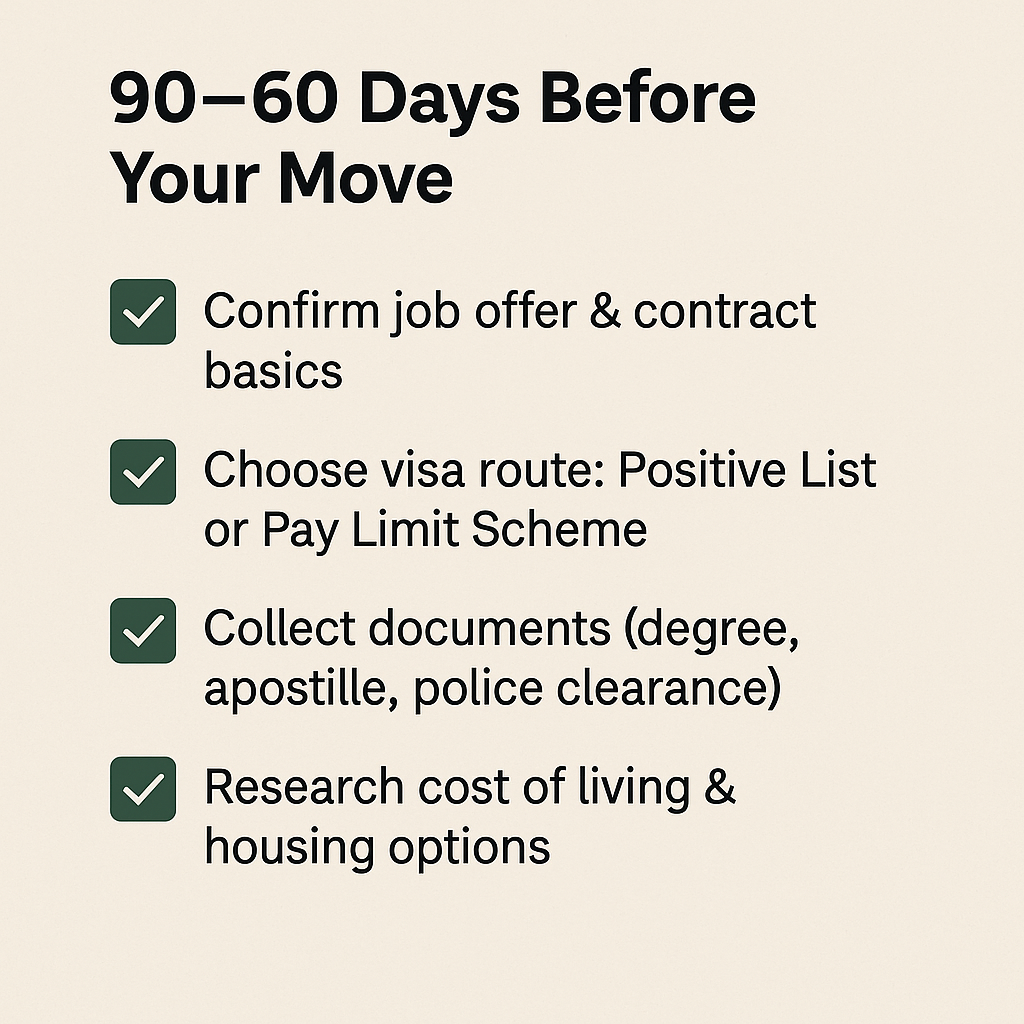
30–15 Days Before Your Move
With the core admin out of the way, it's time for logistics.
- Book short-term housing. A temporary Airbnb, hotel, or sublet for your first 1–3 months is a smart move. It allows you to search for long-term housing in person.
- Plan for kids and pets. If you're moving with a family, get on daycare or school waiting lists. For pets, make sure you have all required vet records, vaccinations, and microchip paperwork ready.
- Organize shipping. Decide what you're bringing and what you're leaving behind. Arrange for a shipping company to transport your items, and begin packing essentials for your luggage.
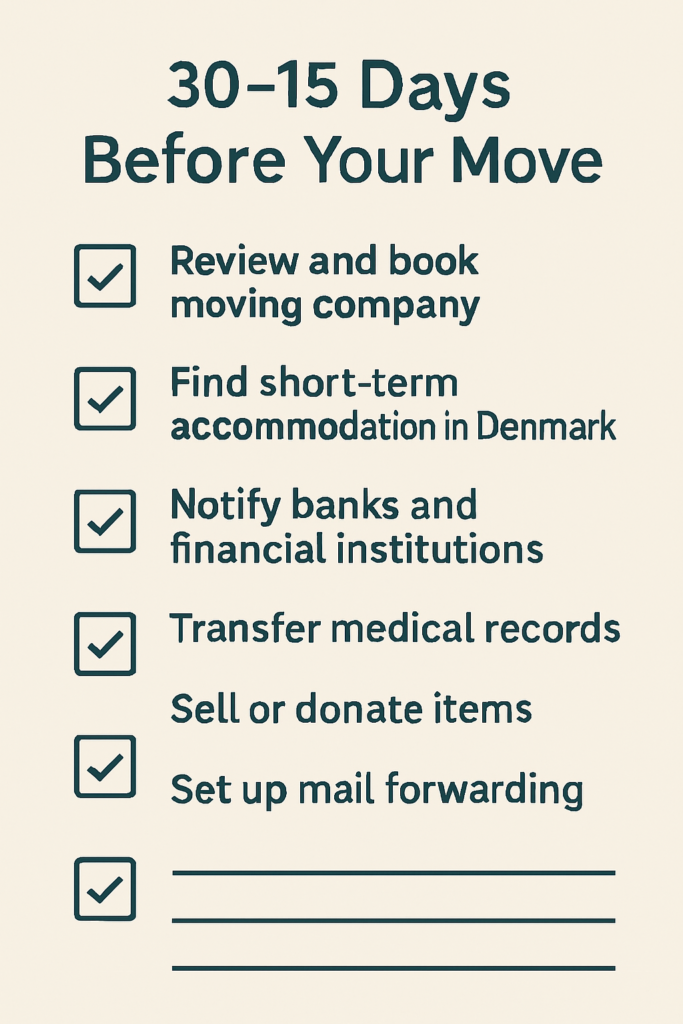
How to Get Your Danish Work Visa
Getting the correct permit is the first step in your relocation to Denmark. The process varies based on your nationality and professional qualifications. The three main routes for non-EU citizens are the Positive List, the Pay Limit Scheme, and the Fast-track Scheme.
The Positive List
This scheme is for professionals in fields with a documented shortage of skilled labor. If your job title is on the list (updated twice a year), your application is fast-tracked. Common roles include IT engineers, doctors, and specialists in green technology.

The Pay Limit Scheme
This is a visa for high-earners. As of 2025, the minimum annual salary threshold is DKK 514,000 (approx. $74,000). Your employer's contract must meet this threshold to be eligible. The benefit is that your job doesn’t need to be on the Positive List.

The Fast-track Scheme
For companies certified by SIRI, this scheme allows for a quicker, more flexible process for employees. It's often used by large international companies to bring in highly skilled talent.
Once your permit is approved, you must apply for it at a Danish mission or embassy in your home country. You'll need to provide biometrics (fingerprints and photo) as part of the process.
If you are a doctor, nurse, or other licensed professional, you must also obtain authorization from the Danish Patient Safety Authority (SST) before you can practice. This process is entirely separate from your visa and can take many months, so begin it early.

- Browse hundreds of professional roles and apply directly today: Denmark jobs.
Your First Week in Denmark: Do This in Order
The first week is all about a single goal: getting your CPR number. This is your social security number, and it’s a prerequisite for almost everything else. Follow these steps in order for a seamless process.
- Register your address and get your CPR number at the Kommune/ICS. 📄 You must go to your local municipality office (Kommune) or the nearest International Citizen Service (ICS) to register your address. You'll need your passport, residence permit, and rental contract. This is where you receive your CPR number and officially become a resident.
- Choose a GP and receive your Yellow Health Card. During your CPR registration, you will be asked to choose a general practitioner (GP). A few weeks after your registration, your physical Yellow Health Card will be mailed to your address. This card is your proof of public healthcare coverage.
- Create your MitID (digital ID). Your MitID is a digital ID that provides secure access to your bank, tax records, and all other public services. You will need your passport and CPR number to create it. You can do this at the Kommune/ICS office or a bank.
- Set up your NemKonto (default bank account). Your NemKonto is the bank account designated by the government for all official payments, including your salary, tax refunds, and unemployment benefits. You set it up through your Danish bank after opening an account.
- Register your tax card at SKAT. Your employer cannot pay you without a tax card. You must go to SKAT, the Danish tax agency, either online or in person to apply for one. SKAT will need your CPR number and employment contract.
- Buy a Rejsekort (public transport card) and a SIM card. These are crucial for daily life. You can get a pre-paid SIM from a provider like Lebara or Lycamobile, and buy a Rejsekort at most train stations or convenience stores.
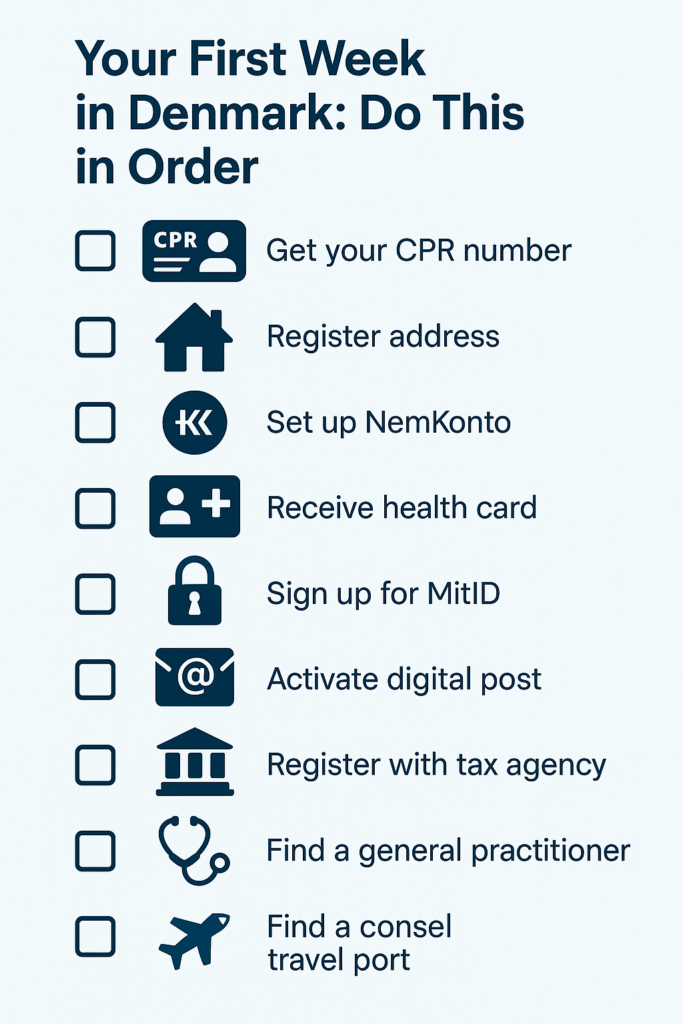
Managing Money & Danish Administration
Navigating Danish financial administration is simple once you know the core concepts.
- Open a bank account. You will need your passport, your CPR number, and your Danish residence permit. While you can open a basic account with just your passport in some cases, having a CPR number makes the process much faster.
- Understand your payslip. A Danish payslip is simple. The gross amount is your full salary. From this, the AM-bidrag (labor market contribution, 8%) is deducted first. The remaining amount is subject to tax based on your tax card. Your payslip will also show payments to your pension fund (ATP).
- Pick an A-kasse and a union. An A-kasse (unemployment insurance fund) is a private, voluntary organization that provides unemployment benefits if you lose your job. A trade union provides legal and employment support. Joining both is highly recommended for job security and support.
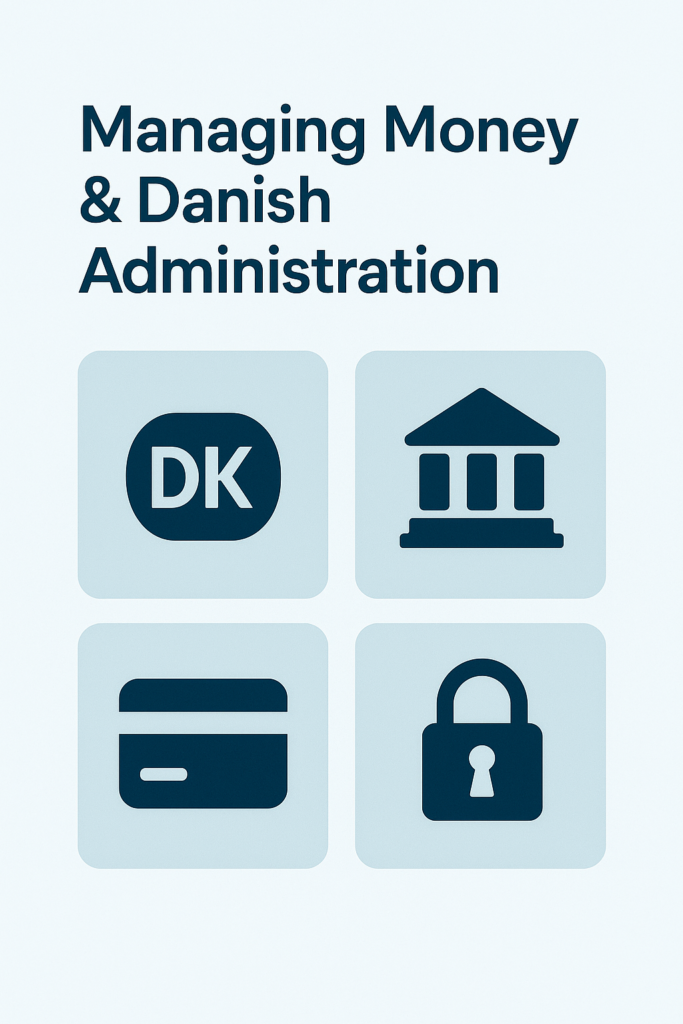
Finding Housing & Setting Up Utilities
Finding a home is often the biggest challenge for new arrivals. Here’s what you need to know.
- Short-term vs. long-term rentals. Use sites like Airbnb or Booking.com for your first month. For long-term rentals, use platforms like BoligPortal and HousingAnywhere. Be aware of scams; never send money before viewing a property.
- Deposit rules. The standard rental deposit is three months’ rent. It's often required in addition to three months of prepaid rent. This means you might need up to six months' rent in cash just to move in.
- Utilities & internet. It's your responsibility to set up utilities for most long-term rentals. You'll need to contact a provider for electricity, gas (if applicable), and internet. Prices for Cost of Living in Denmark 2025 are very high, so compare providers.
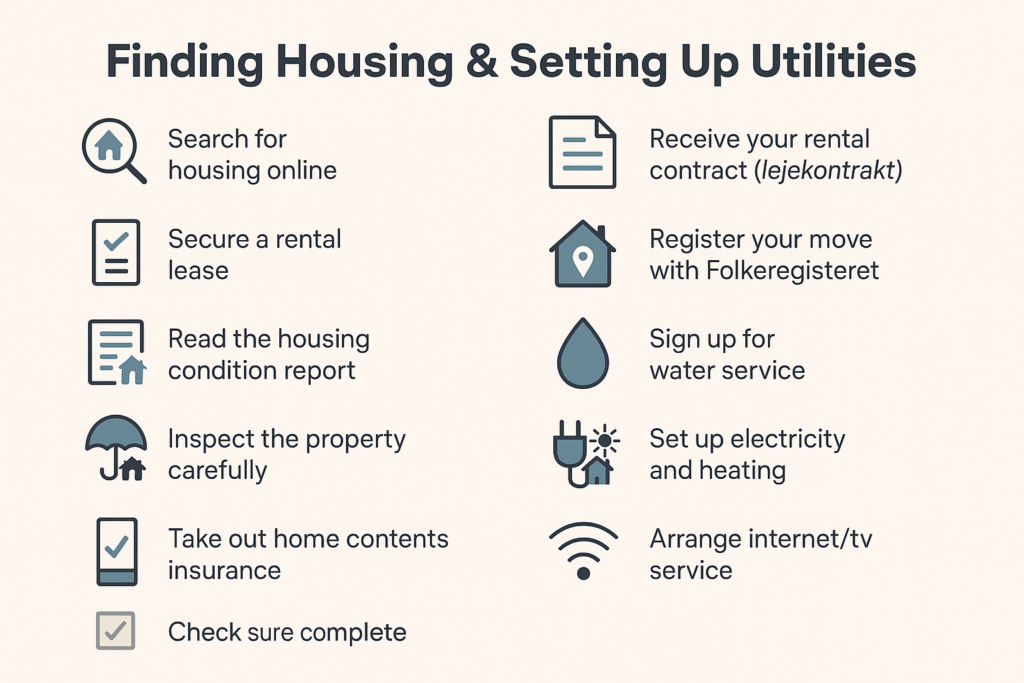
Your Guide to Danish Healthcare & Insurance
Denmark's public healthcare system is excellent and free at the point of use for residents.
- Public healthcare via CPR. Your Yellow Health Card gives you access to public doctors, hospitals, and specialists for free.
- Dental and physical therapy. Public coverage for dental care is limited for adults, and physical therapy often requires a partial payment. Many people buy private insurance to cover these costs.
- Emergency numbers. 112 for all emergencies (police, ambulance, fire). 1813 for medical advice outside of your GP's office hours in the Copenhagen area.
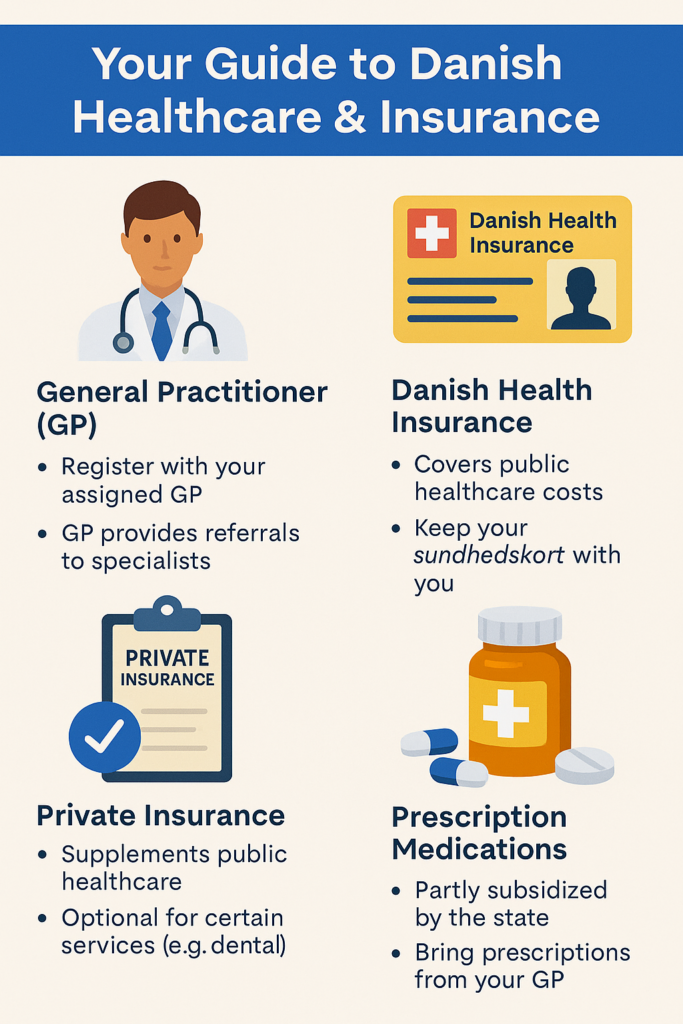
Driving, Transport & Daily Life in Denmark
Denmark is famous for its efficient public transport and cycling culture.
- Driving license exchange. If you have a license from an EU/EEA country, you can use it until it expires. If your license is from a non-EU country, you must exchange it within 180 days of moving to Denmark. The process usually requires a medical check and sometimes a new driving test.
- Bike rules. You must have front and back lights and reflectors after dark. Fines for riding without lights are steep. Always signal when turning.
- Childcare and schools. Childcare (vuggestue/børnehave) and schools are high quality. However, waiting lists can be long. Register your children with your local municipality as soon as possible.

Work Culture & Getting Hired Fast
Danish workplace culture is unique. It's flat, informal, and team-oriented. Your Danish CV format should be concise and focused on skills. .
- Concise CVs: Danish recruiters value a two-page CV that gets straight to the point. Ditch the long personal statements. Focus on quantifying your achievements with data and metrics. Read our full guide on the Danish CV format guide.
- Direct communication: The work environment is low-hierarchy. It's common to address managers by their first name. Meetings are direct and focused on problem-solving.
- Leverage AI tools. To get hired fast, you need to be efficient. Our AI Resume Builder can help you craft a Denmark-ready CV that gets past Applicant Tracking Systems (ATS). Use our AI Job Interview tool to practice for the direct, pragmatic style of Danish interviews. And before you accept an offer, use the AI Salary Checker to benchmark your salary.
Finding a job can be a challenge, but with the right tools, you can stand out. Explore high-demand IT jobs in Denmark, Healthcare jobs in Denmark, and Engineering jobs in Denmark. When you find a role you love, our Auto-Apply feature can help you apply quickly.

Printable Master Checklist
This final checklist provides a handy summary of all the tasks you need to complete.
Pre-Move (90+ Days)
- Confirm your job offer details.
- Get your visa/residence permit application submitted.
- Gather all required documents and get them apostilled/legalized.
- Arrange for temporary housing.
- Get on a waitlist for a school or daycare (if applicable).
- Begin the professional authorization process if you are in a regulated field.
Arrival Week (First 7 Days)
- Go to the Kommune or International Citizen Service (ICS) to get your CPR number.
- Choose a GP and receive your Yellow Health Card.
- Register for your MitID.
- Open a bank account.
- Set up your NemKonto.
- Go to SKAT to get your tax card.
- Buy a SIM card and a Rejsekort.
First 30 Days
- Receive your CPR number, Yellow Health Card, and MitID.
- Sign up for an A-kasse and a union.
- Apply for your driving license exchange (if needed).
- Set up your utilities and internet at your new home.
- Familiarize yourself with local transport routes and biking culture.
First 90 Days
- Find long-term housing.
- Begin language lessons.
- Integrate into your local community by joining clubs or social groups.
- Ensure all your family's documents and registrations are complete.

Frequently Asked Questions
You will need your passport, a valid visa/residence permit, a signed employment contract, proof of address in Denmark (rental agreement), your university diplomas, and a clean police clearance certificate. If you have a family, you will need their passports and birth/marriage certificates.
You can get a temporary CPR number and begin the MitID application process at your first appointment at the Kommune/ICS. The physical Yellow Health Card will be mailed to you within a few weeks, while the MitID app can be activated 24 hours after your CPR number is issued.
A NemKonto is a mandatory, government-designated bank account for all official payments. To set it up, you must open a Danish bank account and then register it as your NemKonto through your bank's online portal or by using your MitID.
The best visa depends on your profession and salary. The Positive List is for in-demand, highly skilled professionals and offers a faster processing time. The Pay Limit Scheme is for anyone with a job offer that meets the high-salary threshold, regardless of profession.
Many multinational companies, especially in the IT, engineering, and tech sectors, operate in English. While you don't always need Danish to get a job, a willingness to learn the language is highly valued and will make daily life and social integration much easier.
Taxes are automatically deducted from your salary before it reaches your bank account. Your gross salary is first subject to an 8% labor market contribution (AM-bidrag), and the remainder is taxed based on your personal tax card. The total tax rate is progressive and varies by municipality.
An A-kasse is a private unemployment insurance fund. Membership is voluntary but highly recommended. By paying monthly contributions, you become eligible for unemployment benefits if you lose your job. Benefits can be substantial, often covering up to 90% of your previous salary.
The housing market in major cities is competitive. Use social media groups, official housing portals like BoligPortal and HousingAnywhere, and reach out to local real estate agents (mæglere). Be ready to pay a large deposit and act fast on listings.

About the Author: Suleiman Alnsour
Suleiman Alnsour is a career strategist with over 6 years of experience in recruitment and labor market analysis, focused on the Danish and Nordic regions. He specializes in simplifying complex relocation and hiring workflows, providing actionable advice on everything from visa pathways to salary benchmarking.
Explore Denmark jobs and use our AI tools to speed up your search.

Official Danish Government Sources for Relocation
For the most accurate and up-to-date information on working and living in Denmark, refer to these official government websites:
Official Danish Government Sources for Relocation
- Work in Denmark (official): Your primary resource for job searching, a guide to the Danish workplace culture, and visa information.
- New in Denmark – SIRI (official): Provides comprehensive details on residence and work permits for both EU and non-EU citizens.
- Borger.dk – CPR/MitID/NemKonto: The official public portal for all Danish citizen services.
- SKAT – Tax in Denmark: The official website for the Danish tax authority.
- International Citizen Service (ICS): A one-stop shop for new arrivals, helping with CPR, MitID, and tax card applications.
- Danish Patient Safety Authority (SST): Required for the professional authorization of doctors and other licensed healthcare professionals.









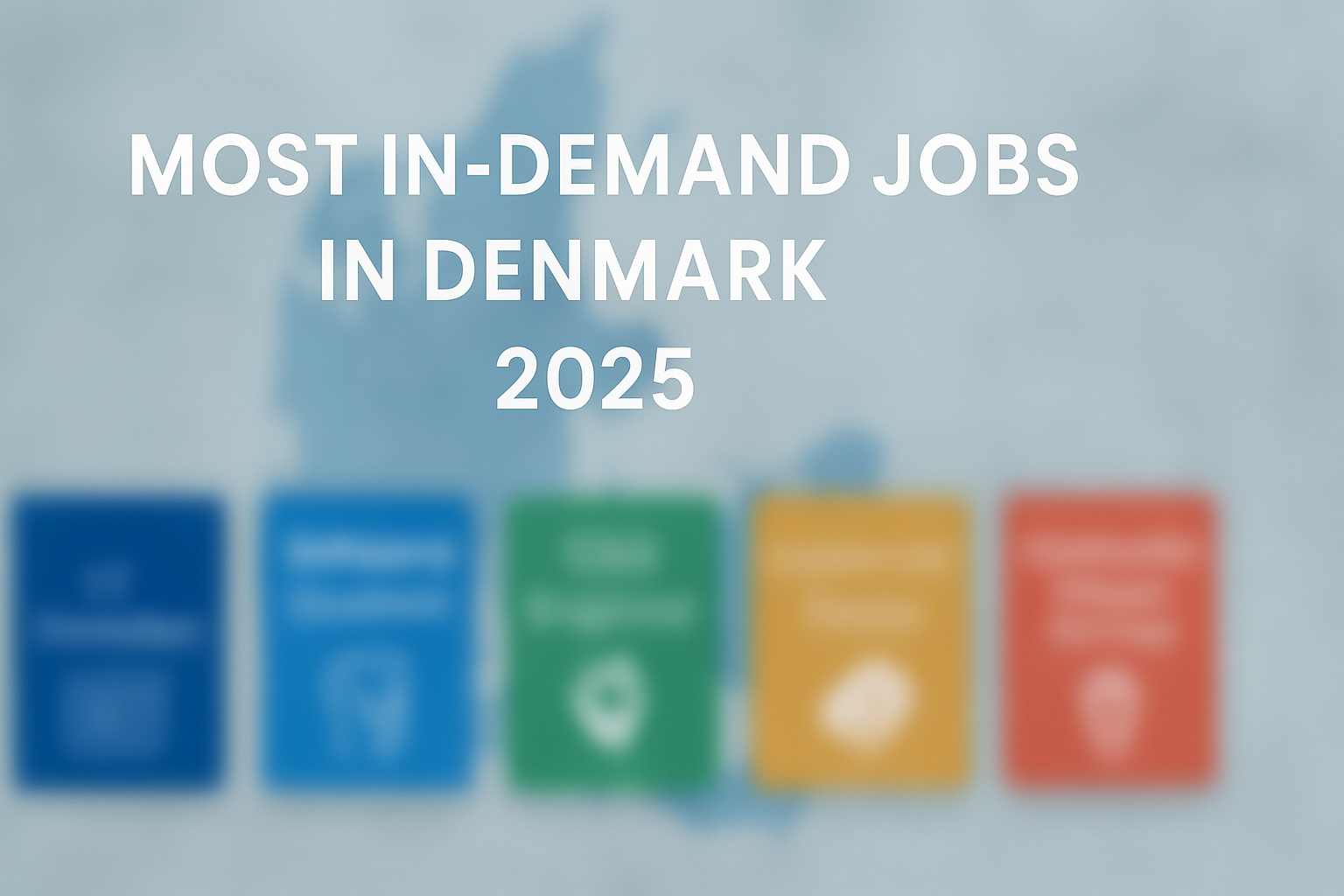 2025-08-08
2025-08-08
 2024-12-22
2024-12-22
 2022-06-01
2022-06-01
 2021-01-26
2021-01-26
 2021-01-14
2021-01-14